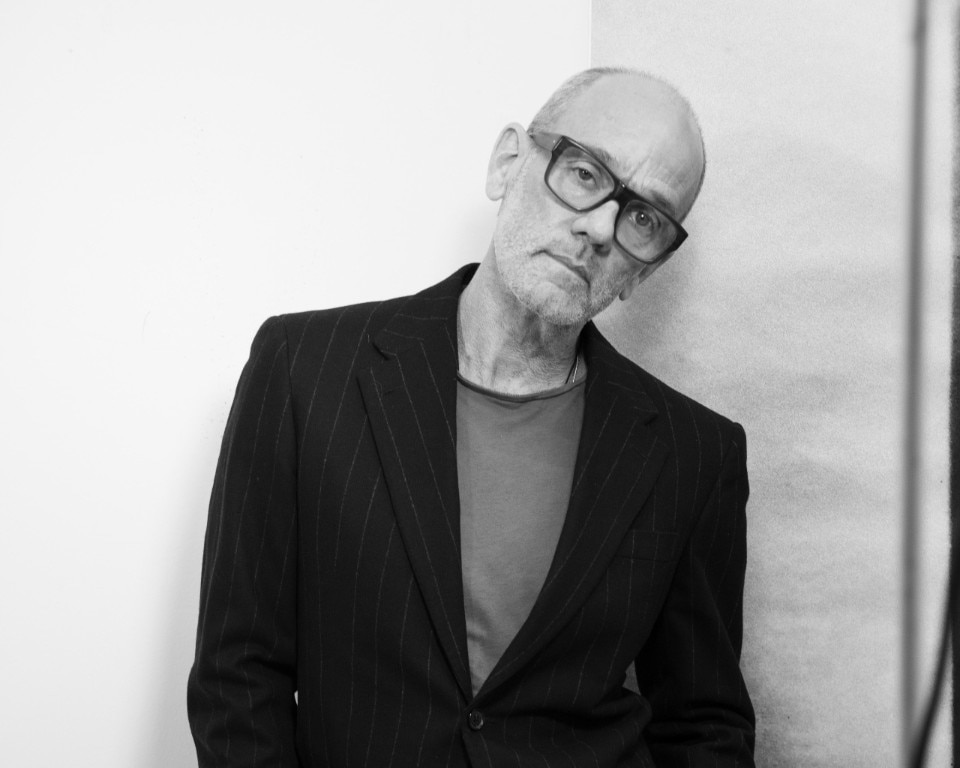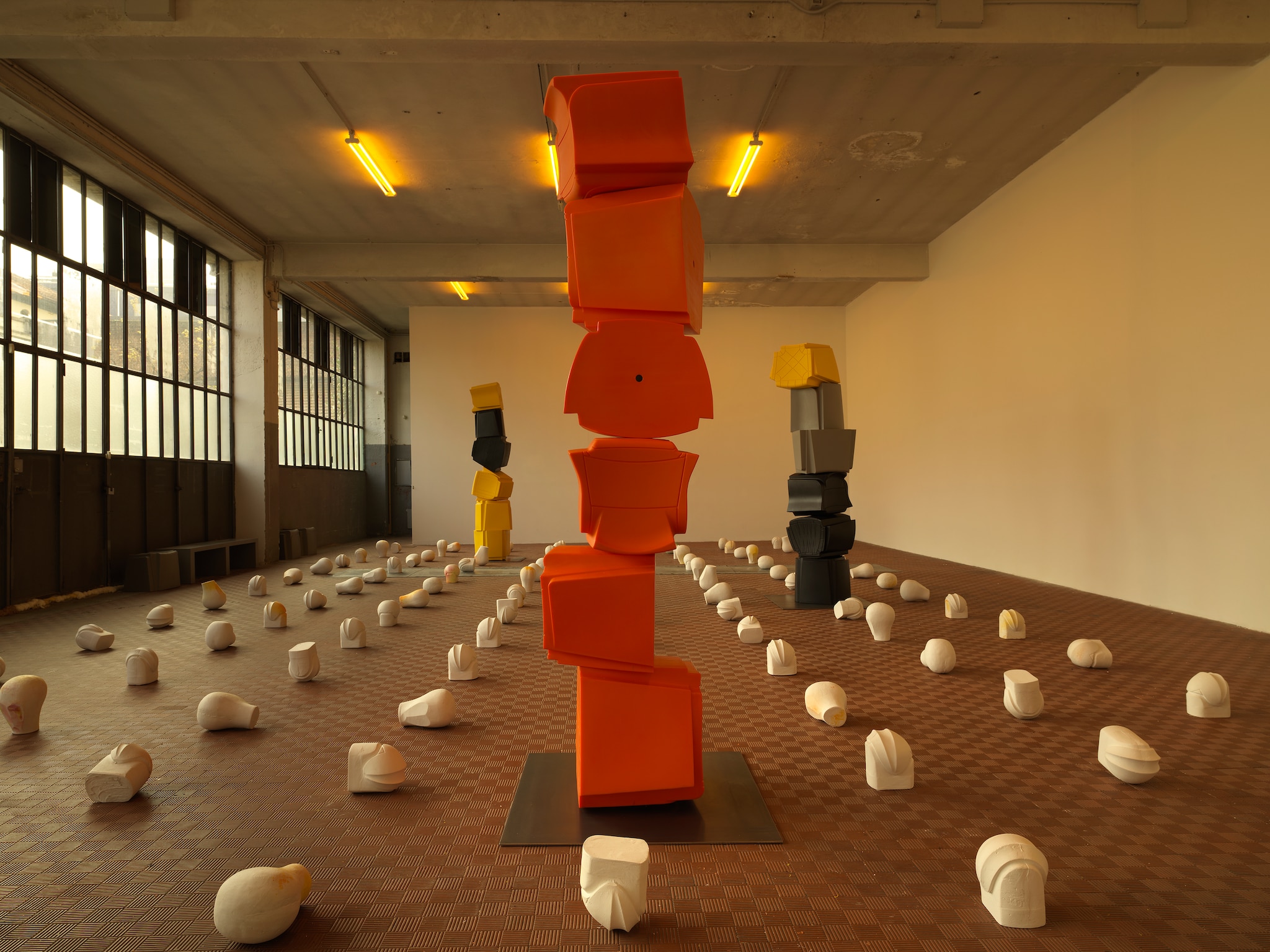“I was thrilled with how people received the work, and I’m relieved that it’s done”, says Michael Stipe. Reflecting on the opening of his first solo exhibition at ICA in Milan, he admits to feeling a mixture of joy and understandable relief a few days later.
Had I been a fan of his when he was the frontman of one of the world’s most famous bands, I would probably struggle to be objective about his venture into visual art. Call it bias, a constraint, or what you will, but I’d likely stick to his music, a constant on radio playlists throughout the ’90s and beyond. His charismatic presence and moves were everywhere on MTV, and his brilliant talent was obvious and undeniable.
Fortunately, the creative demon of Michael Stipe, frontman of the iconic R.E.M. for 31 years and 16 albums, remains indifferent to my musings and the nostalgic yearnings of fans. He races forward, steering clear of the alternative rock confines he once helped define. After two photo books, the third (also for Damiani) is now out. Most notably, Stipe has unveiled his first institutional exhibition at ICA Milano, a cutting-edge art space established by curator Alberto Salvadori in 2019. The exhibition’s title encapsulates a life and echoes a verse: “I Have Lost and I Have Been Lost, but Now I’m Flying High.”
I don’t take this lightly - I am too proud to release anything that I don’t think is the absolute best work that I could do at that moment... but of course I am also my harshest critic.
In a former industrial space in a rapidly transforming Milan suburb, the ex-rock star’s unbridled passion for experimenting with diverse languages and maximum freedom of expression will burst forth until March 16. This is what it is all about: never stopping, always expressing and self-representing, narrating and imagining, bringing together the living and the dead, words and images, people and characters that are important to the author and to so many others. Private memories and collective images, the “I” and the “we” are interwoven throughout the exhibition. From the initial installations paying homage to the monumental Brancusi (1876-1957) and the equally exceptional yet often overlooked Marisa Merz (1926-2019), that Michael admints discovering online, the exhibition unfolds. But there is also room for design in Michael’s cultural-visual reference universes, exemplified by his unique take on Brancusi’s famous endless column – A Cast of the Space Under my Cheap Plastic Chair Endless Column, obtained by stacking casts of the space beneath a chair in his studio.
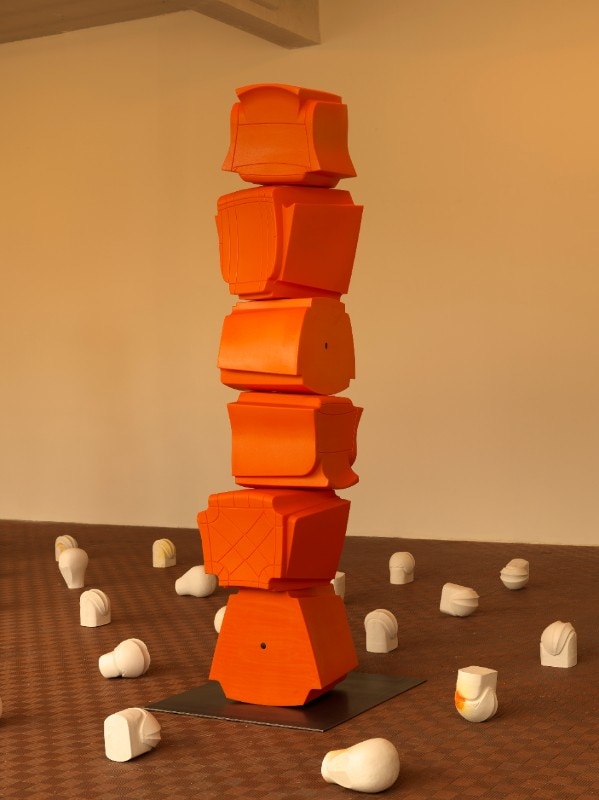
“The entire Arte Povera movement just really spoke to me. Same as Superstudio and the exhibition Italy: The New Domestic Landscape”, reveals Stipe, tracing the diverse roots of his expressive journey, including MoMA’s groundbreaking 1972 showcase of Italian design in New York. “I also adore great graphic design and am convinced that’s the direction I would have moved in had music not taken over when i was a teenager. Karel Martens is a favorite of mine. He recently did a collaboration with a towel manufacturer, which I bought as a gift for my sister and brother-in-law this year!” Stipe seamlessly blends private and public life in his narratives. Upstairs at the Milan exhibition, portraits in various forms (photographic, graphic, or cast in clay pots) of friends, muses, and heroes, such as Tilda Swinton, artist-filmmaker Sam Taylor Wood Johnson, and the unforgettable Michael Hutchence of INXS, coexist. It’s a banquet of creative celebrities, with Stipe playing the roles of both host and crasher. Let me clarify: the exhibition pulses with the restless energy of this music legend, who, despite mingling with artists of all kinds (Patti Smith is a favorite), exudes the humility and open enthusiasm of a debutante.
There’s a sense of helplessness that abounds everywhere that I look, read, see. Social media and instant news have us all exhausted and anxious.
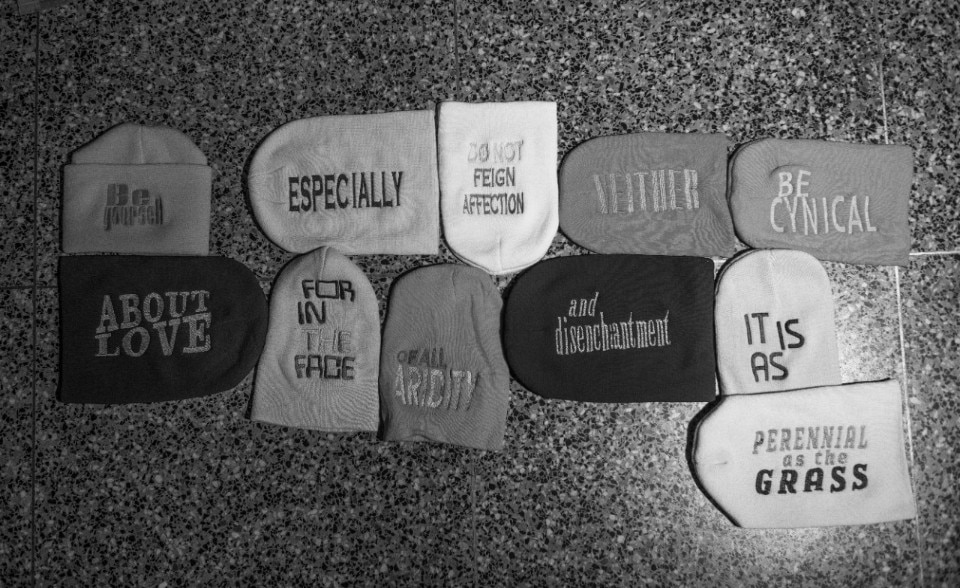
Stipe believes art can offer hope in these turbulent times marked by trauma. His pantheon, which is also our pantheon in some ways, shields him from the vulnerability that pervades both individual and collective experiences. Unapologetically sentimental, he addresses the darkness of our era: “We are in such dark times. It’s so obvious to us all, and yet the pain of it makes us want to just fly through with blinders on and not have to address the trauma of, say, covid lockdown, refugees, or neo-fascist movements. There’s a sense of helplessness that abounds everywhere that I look, read, see. Social media and instant news have us all exhausted and anxious. With this show, I hoped to provide a more optimistic and, yes, uplifting calm to all the stress. And to underline the poem Desiderata (written by Max Ehrmann in 1927; two of the works in the exhibition are based on it [ed]), and celebrate its near centennial, to me references back to my eyes-wide-open teens, and how influential that poem was for me as a young, utopian dreamer. It offers salvation and understanding that is so bare and obvious. I cherish its simplicity of thought”.
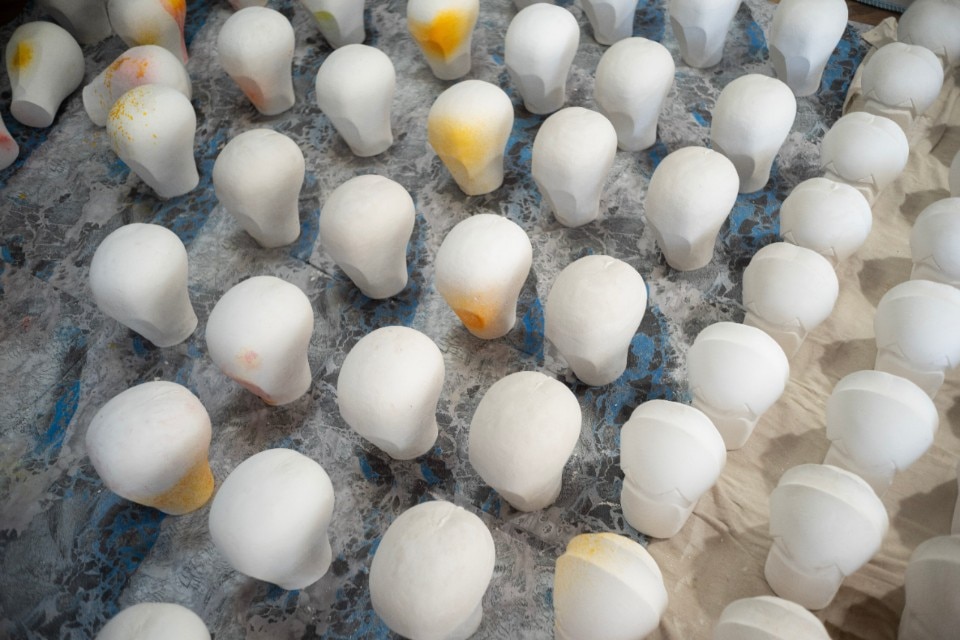
A decade ago at a dinner in Paris hosted by Renzo Rosso, I sat across from Michael Stipe. If I had been a fan back then, we probably wouldn’t have discussed art, and staying in touch would have been unlikely. I might have kept hearing from Thomas Dozol, Michael’s lifelong partner and fellow artist, whose exhibition I attended in New York shortly after. Instead, we met again in 2019 and, on that occasion, he anticipated his Milan exhibition. While I’m all for interdisciplinary creativity, I was a bit taken aback. Seeing enormously successful people venture into new fields and risk failure still leaves an impression.
That’s also something we addressed in our interview after his public debut in the visual arts, which was postponed for three years because of the pandemic. We discussed whether his previous fame acts as a shield or whether he feels more exposed entering the art world.
“I do feel somewhat protected by my reputation and at the same time there is a high standard that comes along with that. The different mediums are interchangeable in my opinion, be it video, photography, music. These are interests I’ve carried for almost 50 years... I am only now getting to where I’m able to express them publicly and on my own. Do I feel vulnerable in the presentation of the work? Absolutely! That’s the challenge and the beauty of it. I don’t take this lightly - I am too proud to release anything that I don’t think is the absolute best work that I could do at that moment... but of course I am also my harshest critic. If I fall on my face, well, then I fall on my face. But I do so - I hope - with a built-in level of sincerity and humor, and hopefully an audience that will laugh along with me at the attempt”. In essence, there’s public recognition - also known as success -, 30 years of music industry professionalism, yet an unwavering need to explore, as one of my professors might say, the last remaining territory of freedom: art. Stipe invites us to join him on this journey.
- Exhibition:
- I have lost and I have been lost but for now I’m flying high
- Location:
- Fondazione ICA Milano, Via Orobia 26
- Dates:
- from December 12, 2023 to March 16, 2024
- Curated by:
- Alberto Salvadori


